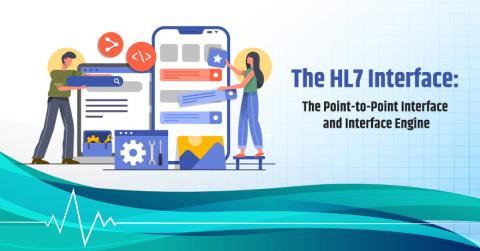Products Catalogs & Keywords:

HL7 in Healthcare: Enhancing Interoperability and Data Exchange
In today's rapidly evolving healthcare landscape, the seamless exchange of information between healthcare systems is crucial for providing quality care and improving patient outcomes. HL7 (Health Level Seven) plays a vital role in facilitating this data exchange and promoting interoperability among various healthcare applications and systems.
HL7 is a set of international standards that govern the structure, content, and exchange of electronic health information. It provides a framework for healthcare organizations to communicate and share data efficiently, regardless of the systems or applications they employ. With HL7, healthcare providers can overcome the challenges posed by disparate systems and ensure that critical patient information flows smoothly across different care settings.
One key advantage of HL7 in healthcare is its ability to enable comprehensive patient records. HL7 standards allow different systems, such as electronic medical record (EMR) systems, laboratory information systems, radiology systems, and more, to exchange patient data seamlessly. This means that healthcare providers can access a complete and up-to-date view of a patient's medical history, diagnoses, medications, allergies, and test results, leading to informed clinical decision-making and enhanced patient care.
Moreover, HL7 promotes interoperability, allowing healthcare organizations to integrate various applications and systems seamlessly. For instance, HL7 interfaces enable the integration of EMR systems with other clinical systems, such as picture archiving and communication systems (PACS) or pharmacy systems. This integration streamlines workflows, reduces duplicate data entry, and eliminates potential errors, leading to improved operational efficiency and reduced costs.
HL7 also plays a crucial role in enabling healthcare data exchange beyond the confines of a single institution. Through HL7 standards, healthcare organizations can securely share patient information with external stakeholders, such as laboratories, imaging centers, public health agencies, and other healthcare providers. This exchange of data promotes care coordination, supports population health management initiatives, and facilitates reporting for public health surveillance.
Furthermore, HL7 accommodates the evolving healthcare landscape by continuously updating and expanding its standards. For example, HL7 FHIR® (Fast Healthcare Interoperability Resources) has gained significant traction as a modern and more accessible standard for healthcare interoperability. FHIR utilizes web-based APIs and a resource-oriented approach, making it easier to develop applications and exchange healthcare data securely.
In summary, HL7 in healthcare plays a pivotal role in enhancing interoperability and enabling the exchange of electronic health information. By standardizing communication, promoting data exchange, and supporting integration among various systems, HL7 facilitates improved patient care, operational efficiency, and collaboration across the healthcare ecosystem. As the healthcare industry continues to embrace digital transformation, HL7 remains a critical component in achieving seamless data exchange and unlocking the full potential of health information technology.
Source URL: - https://itechindia.co/us/blog/hl7-standards-in-health-information-exchange/
